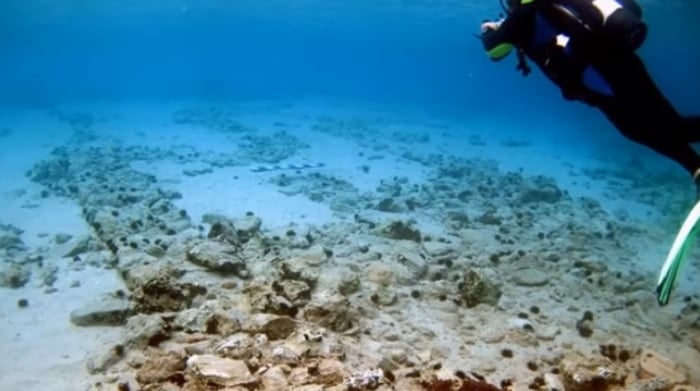
Pavlopetri (or “Paulopetri”) is a small islet off the coast of Laconia in the southern Peloponnese, where ancient history meets the endless blue of the Mediterranean Sea.
This lovely place, which remains almost completely unknown to the majority of people, hides one of the most amazing stories in Greek history, since it is the oldest ancient Greek city that has ever been discovered underwater.
Its name, which literally translates to ”Paul’s Stone,” is directly related to St. Peter and St. Paul, the two greatest Christian apostles and martyrs, who traveled far and wide spreading Christianity during the first century AD.
The city’s long history, however, stretches nearly 5,000 years back into antiquity, since the broader region was known to have been inhabited during the earliest years of Greek history.
Discovered in 1967 by Nicholas Flemming, this ancient Greek town is now the oldest underwater “lost city” in the Mediterranean Sea — and one of the oldest such cities anywhere on the globe.
The year after Pavlopetri’s discovery, in 1968, archaeologists from the University of Cambridge in the UK visited this extraordinary place to map the entire location and to determine the extent of the ancient lost city.
At first, the scientists believed that their discovery was originally of a Mycenaean-era city, but later research revealed that it was actually much older.
Pavlopetri home to extensive ancient city
More specifically, scientists were able to determine that Pavlopetri was first inhabited in 2800 BC, after elements dating back to the Bronze age were found and identified.
Perhaps the most unique feature of this area is that up until now, its overall layout has remained intact, making it a location of extraordinary importance to archaeologists.
Researchers believe that the city was submerged after a series of three cataclysmic earthquakes occurred in the area around 1000 BC.
These violent seismic events, which led to the city never being able to re-emerge from the bottom of the sea, played a crucial role in maintaining its original characteristics.
Untouched by human intervention, its secrets have remained unknown for thousands of years.
Just over the last decade, new state-of-the-art technology has enabled scientists to discover that the underwater city is comprised of at least fifteen large buildings, lying approximately four meters (13 feet) under the surface of the sea.
Now there are hopes that modern technology will further assist scientists to uncover even more hidden mysteries of this ancient world, making it more widely known and possibly even accessible to visitors via organized tours.
See all the latest news from Greece and the world at Greekreporter.com. Contact our newsroom to report an update or send your story, photos and videos. Follow GR on Google News and subscribe here to our daily email!



